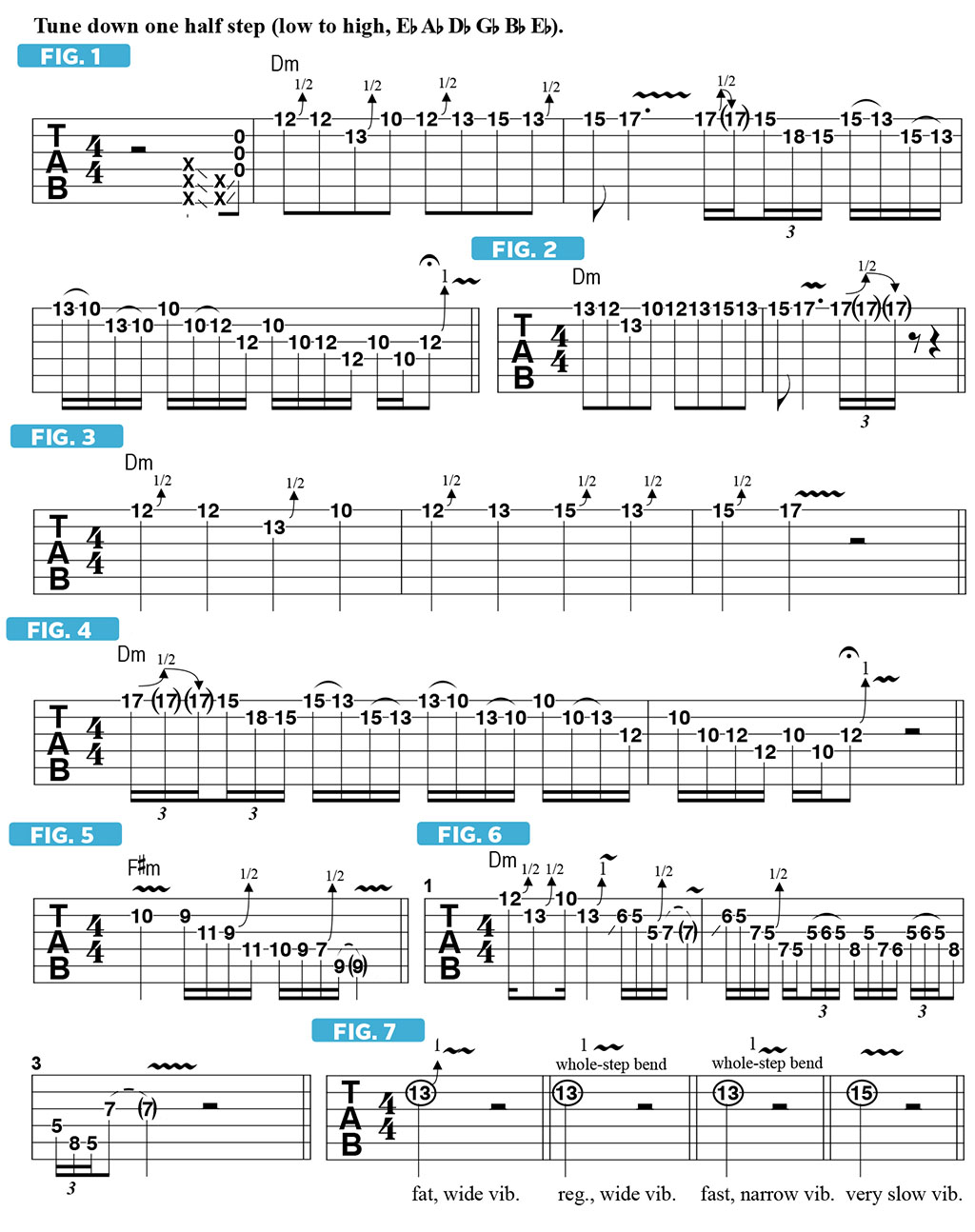Learning to Speak Musically with Your Own Unique Accent
Judas Priest's Richie Faulkner teaches you how to interpret the musical language of your heroes, and utilize it in your own unique way.
All aspiring guitarists, in learning to play in the styles they are most interested in, analyze the solos of their favorite guitarists, and this is how each of us learns to “speak” in the musical language of our heroes. At a certain point, however, we must each take what we have studied and learn how to utilize it in a unique way, in order to sound like ourselves.
I, myself, am not very aware of the nuances of my own playing, while I’m playing. It’s only when I listen back to a recording of one of my solos that I will think, “well, that’s interesting,” because I’m articulating that line with a lot of subtle bends, or I’m picking hard to get pinch harmonics, or what have you. I consider it an essential part of the learning process to record yourself and then scrutinize the recording to listen to what you did and focus on how you can improve.
FIGURE 1 offers an example of a typical way in which I might improvise a short phrase. The line is based on the D minor pentatonic scale (D F G A C), with the inclusion of the major second, or ninth, E, which I like to use to bend up one half step to the minor third, F. I also like to bend the fifth, A, up a half step to the minor sixth, Bb. The addition of these two notes results in the D natural minor scale, also known as the D Aeolian mode (D E F G A Bb C).
In breaking down this three-bar passage, the basic notes in the first phrase are shown in FIGURE 2. Instead of fretting each note, I prefer to introduce subtle half-step bends throughout the line to give it more emotion and musical expression, as demonstrated in FIGURE 3. The first phrase is played with my guitar’s bridge pickup on and a strong pick attack, which yields a bold, aggressive feeling.

For the second half of the phrase, I switch to my neck pickup while backing off the intensity of my pick attack, in order to achieve a smoother articulation of the melody, as shown in FIGURE 4. That said, I’m still varying the pick attack, as well as my use of subtle bends, which serve to give the line character. It is these little variations and nuances that present your unique musical “fingerprint” and make your playing recognizable as your own.
FIGURE 5 offers another example of employing my bridge pickup with an aggressive pick attack, here with a lick based on the F# blues scale (F# A B C C# E). Again, I’m including the major second/ninth, in this case G#. If I were to transpose that lick back to the key of D minor, I get something along the lines of FIGURE 6.
Finger vibrato is, of course, one of the most expressive sounds on electric guitar, and you should experiment with different approaches to vibrato. FIGURE 7 illustrates subtle differences in vibrato, as associated with Yngwie Malmsteen, Zakk Wylde, Dave Murray and Michael Schenker. Each is slightly different, so be aware of the sound of your own vibrato as compared to your favorite players!
Richie Faulkner has been a member of legendary U.K. heavy metal band Judas Priest since 2011. Their 2018 album, Firepower, became the band's highest-charting album ever in the U.S.
Get The Pick Newsletter
All the latest guitar news, interviews, lessons, reviews, deals and more, direct to your inbox!









![Joe Bonamassa [left] wears a deep blue suit and polka-dotted shirt and plays his green refin Strat; the late Irish blues legend Rory Gallagher [right] screams and inflicts some punishment on his heavily worn number one Stratocaster.](https://cdn.mos.cms.futurecdn.net/cw28h7UBcTVfTLs7p7eiLe.jpg)
